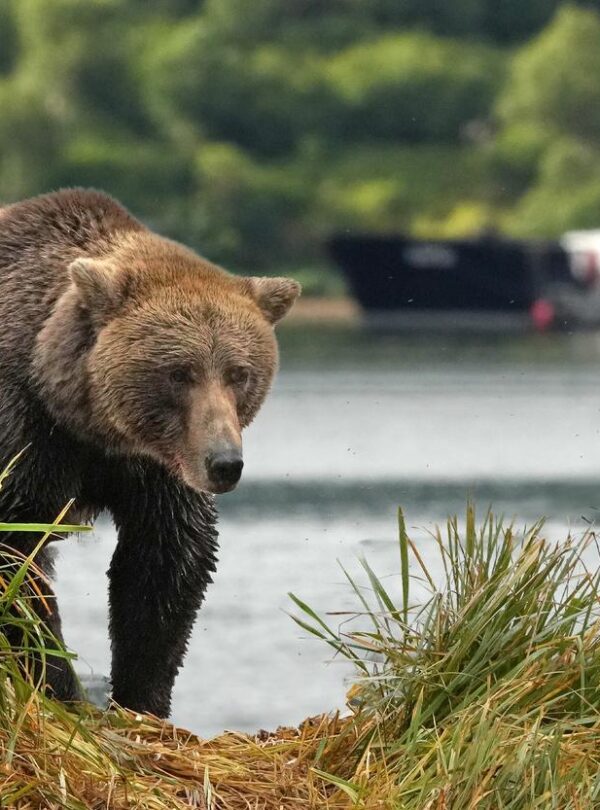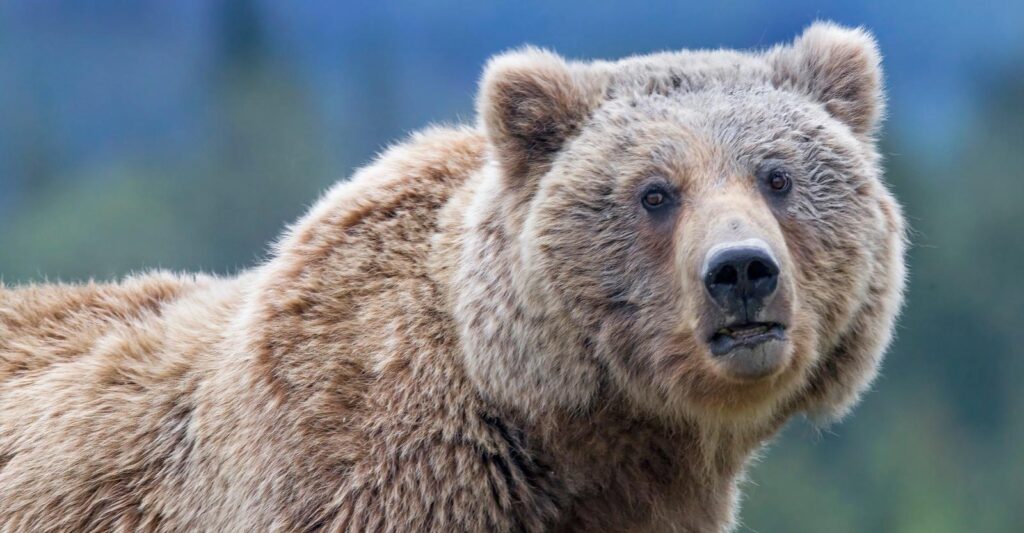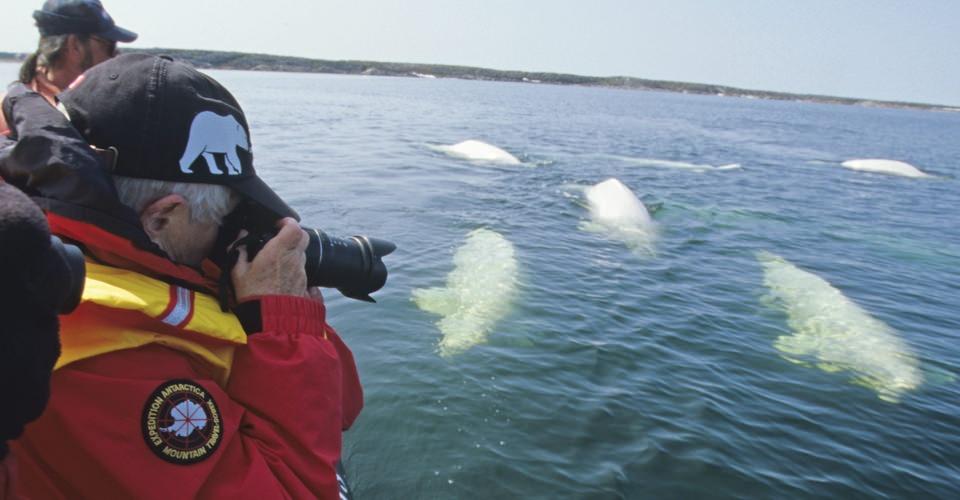Overview
Nature puts on few displays as arresting as Alaskan brown bears feeding on summer’s bounty. These bears—the largest coastal grizzlies in the world—gorge on clams, mussels, sedges and spawning salmon as the fish swim up glacial-fed rivers that pour onto wild beaches. Our private chartered ship, the Natural Habitat Ursus, designed for exploring the Alaskan marine wilderness, offers an exclusive opportunity for just eight guests to follow and photograph bears as they fish, forage and amble along the shoreline. Ashore, we watch safely on foot with our Expedition Leader, an expert bear naturalist who knows these magnificent animals intimately. The grizzlies could not be more nonchalant about our presence! And you won’t find a more remote and pristine setting in which to observe them. Here in Katmai National Park, experience this rarest of encounters with Ursus arctos in all its untamed majesty.
Trip Highlights
- Extraordinary Close-Up Brown Bear Encounters Guided by expert bear naturalists with decades of experience, you won't believe how close you'll get to giant coastal grizzlies—safely on foot!
- A Private Chartered Ship for Exclusive Access Following the Katmai coast aboard the Natural Habitat Ursus, just eight guests have unparalleled access for bear viewing and photography
- Scenic Round-Trip Floatplane Flight from Kodiak Explore Kodiak Island, then fly across Shelikof Strait to the roadless Katmai wilderness where the bears live, backdropped by the Aleutian Range
Itinerary
Please fill out the form below to request a quote for rates.
Included
- Trip price includes: Accommodations, services of Nat Hab's professional Expedition Leader(s), boat crew and local staff, all meals from dinner on Day 1 through breakfast on final day, beer and wine on board the Ursus, some gratuities, airport transfers on Day 1 and final day, gear including chest waders and boots for shore excursions, all activities and entrance fees, all taxes, permits and service fees.
- Internal air cost includes: All float plane flights within the itinerary (this will be listed separately on our invoicing).
Not Included
- Travel to and from the start and end point of your trip, some alcoholic beverages, some gratuities, passport and visa fees (if any), optional activities, items of a personal nature (phone calls, laundry and internet, etc.), airline baggage fees, airport and departure taxes (if any), required medical evacuation insurance, optional travel protection insurance.
Map























